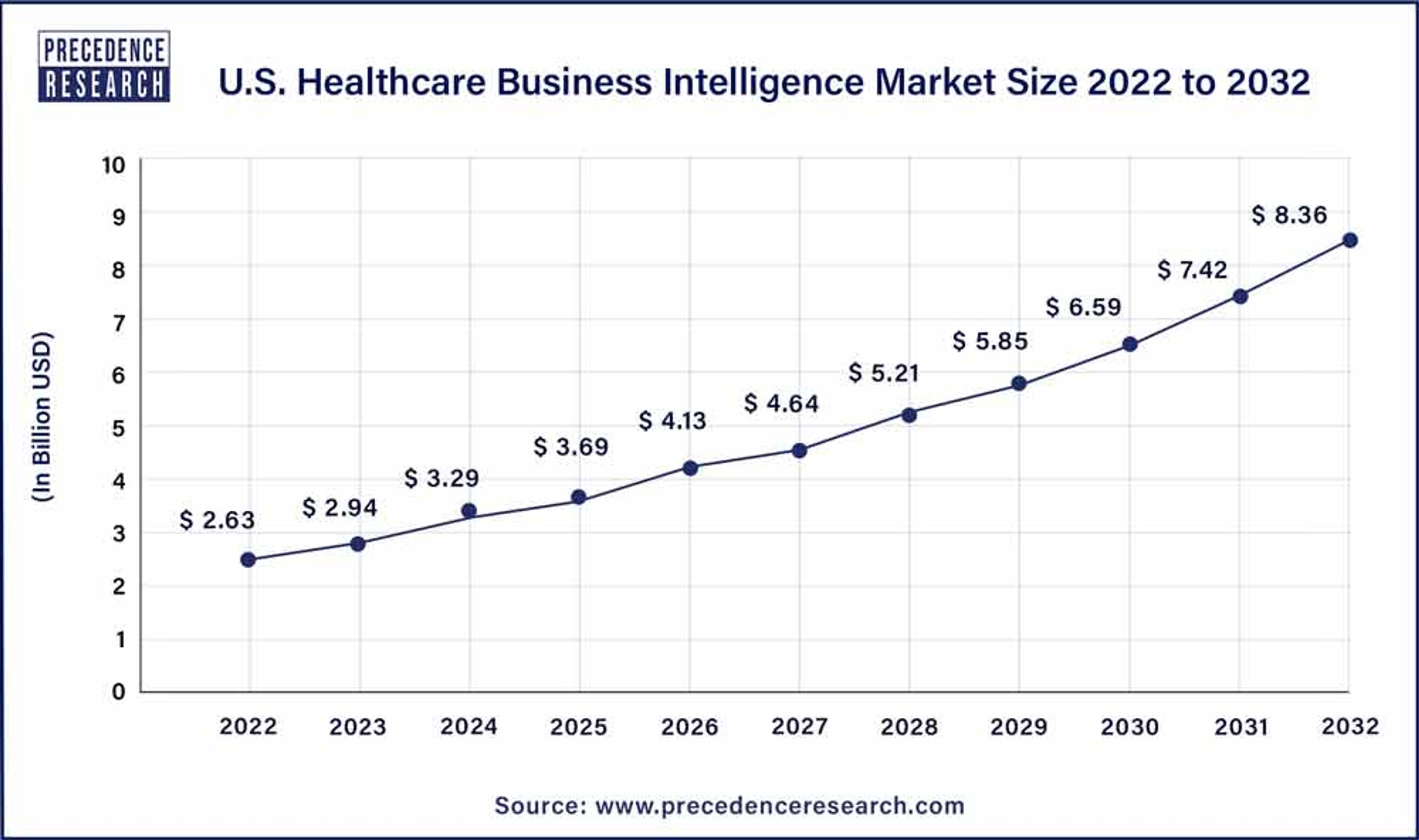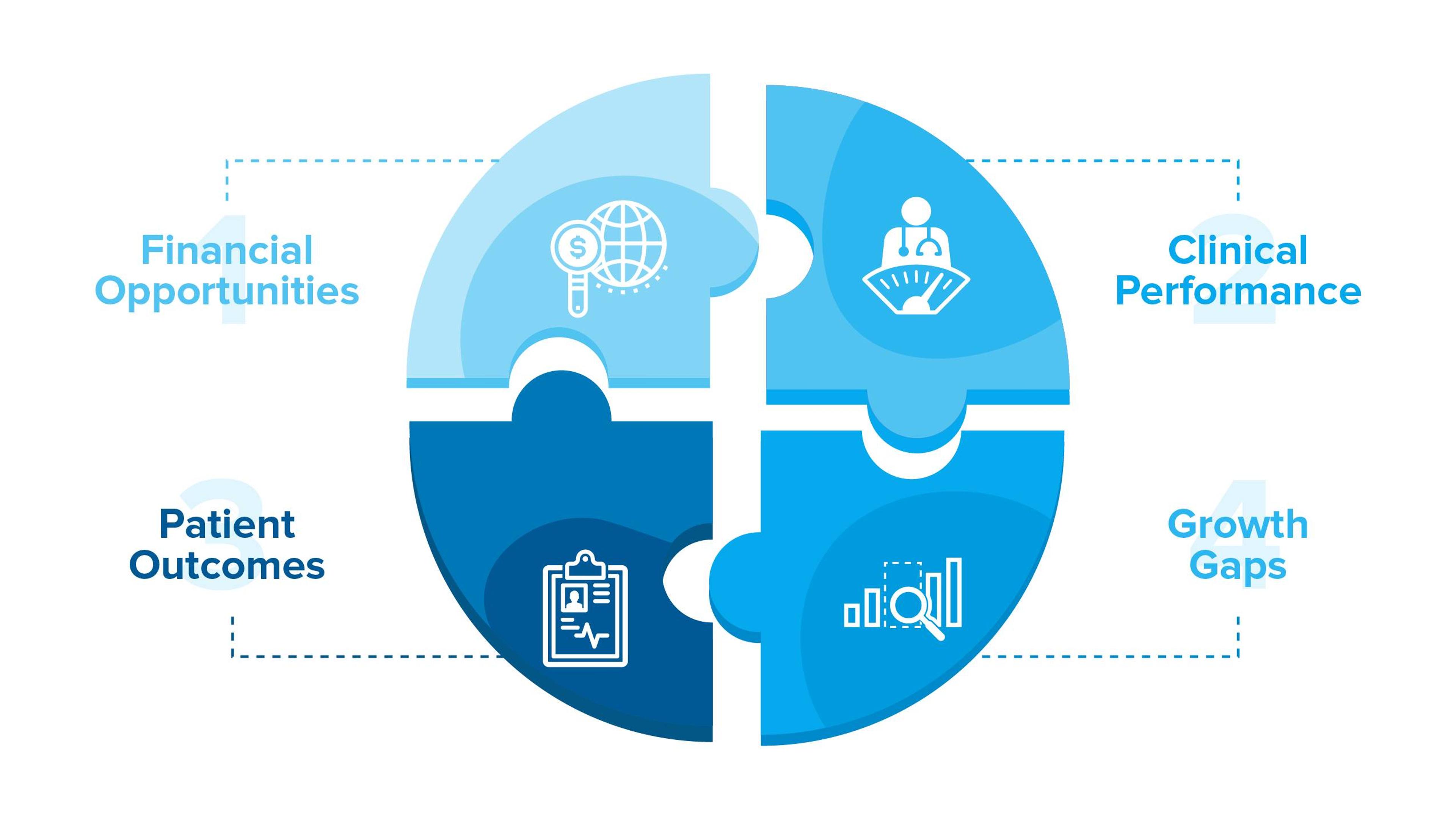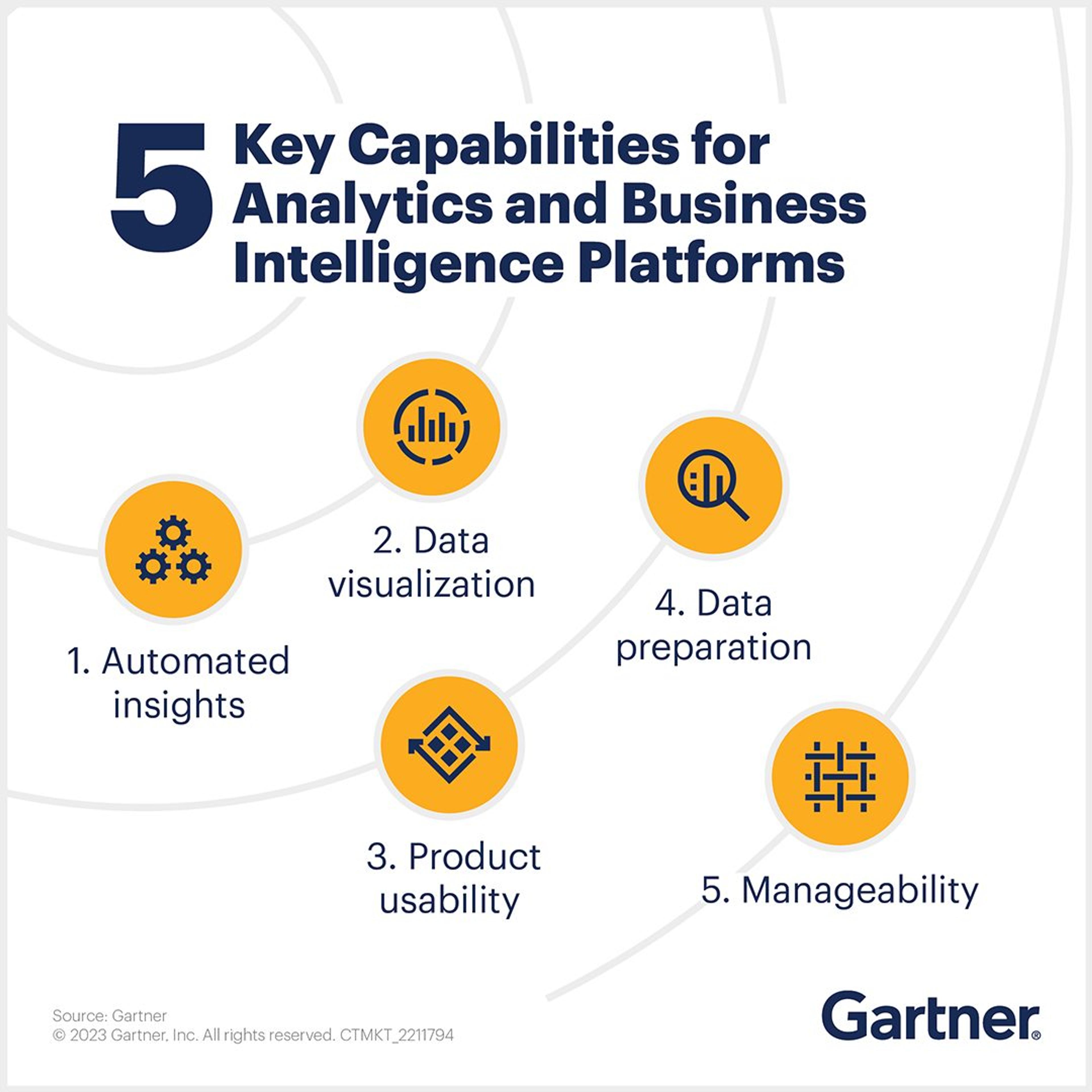blog
The Definitive Guide to Business Intelligence in Healthcare

SECTIONS
Business intelligence in healthcare has emerged as a transformative force in recent years. With the surge in volume of health-related data, the need for sophisticated tools to interpret, analyze, and leverage this information is more pressing than ever.
As healthcare systems grapple with new complexities related to everything from patient care to operational efficiency, healthcare business intelligence offers a pathway to clarity and more informed decision-making.
This guide unpacks the multifaceted world of healthcare business intelligence, its pivotal applications, and the steps organizations can take to seamlessly integrate it into their operations, ensuring a future of data-driven excellence in patient care and organizational growth.
Key Takeaways:
- Business intelligence in healthcare transforms raw data into actionable insights.
- Its use cases encompass clinical, operational, financial, and administrative purposes.
- The market for healthcare business intelligence tools will triple by 2032.
- Choosing the right healthcare business intelligence platform is crucial to success.
What is Healthcare Business Intelligence?
Business intelligence (BI) represents a set of technologies, processes, and tools that enable organizations to gather, store, access, and analyze data to inform business operations and decisions. It transforms raw data into meaningful insights, aiding in strategy development, predicting future trends, and understanding complex patterns.
By leveraging visualizations, dashboards, and advanced data analytics, BI presents information in an accessible and digestible format, empowering organizations to use it to drive better outcomes.
In the context of healthcare, business intelligence takes on an especially vital role. Healthcare business intelligence (or healthcare BI) refers to the application of BI tools specifically to health-related data. In a healthcare landscape now brimming with vast amounts of data, the ability to navigate and understand this data is paramount.
The rise of healthcare business intelligence can be attributed to several factors:
- Complexity of Healthcare Data: The intricacies of healthcare data, with its multitude of sources and formats, require specialized tools to process and interpret.
- Demand for Quality Patient Care: As patient-centric care becomes the focus, there’s an escalating demand for data-driven approaches to personalize treatments, anticipate health issues, and monitor patient outcomes.
- Operational Efficiencies: With tight budgets and ever-increasing costs, healthcare institutions are on the lookout for ways to streamline operations. Healthcare BI provides insights into areas of inefficiency, offering pathways to optimize costs and resources.
- Regulatory and Compliance Pressures: Healthcare providers face stringent regulatory requirements. BI tools ensure that organizations adhere to standards, maintain data integrity, and are prepared for audits.
- Advancements in Technology: With the advent of more sophisticated data storage, processing, and analytics technologies, healthcare institutions are now better equipped to harness the power of BI.
While historically, business intelligence tools have been more associated with sectors like finance or retail, their value in healthcare and life sciences has become undeniable. Healthcare organizations are taking note.
By 2032, the market for healthcare business intelligence tools and services will more than triple from its 2022 value.

Image Source
Use Cases for Business Intelligence in Healthcare
In the dynamic world of healthcare, business intelligence use cases span across operational, clinical, financial, and administrative domains, enabling both better patient outcomes and organization-wide performance. Let’s delve deeper into these applications.

Image Source
Improving Patient Care
- Personalized Treatment Plans: By analyzing a patient’s medical history in conjunction with external datasets, BI can help in tailoring treatment plans that cater to individual needs and conditions.
- Predictive Analytics: Using historical data, healthcare providers can predict potential health risks, ensuring early interventions and better health outcomes.
- Telehealth Metrics: With the rise of telemedicine, BI tools monitor and analyze virtual visit and IoT data to ensure efficacy and efficiency in remote patient care.
Supporting Research and Development
- Clinical Trial Optimization: BI aids in selecting suitable candidates for trials based on a multitude of factors, increasing the probability of success.
- Drug Development: By evaluating past trial data, patient outcomes, and current health trends, BI accelerates the drug development process and identifies potential market gaps.
- Data-Driven Research Insights: Analyzing vast datasets from various studies helps in spotting patterns and correlations that might be missed in isolated research environments.
Identifying Public Health Trends
- Epidemic and Pandemic Response: BI tools can track and predict the spread of diseases, enabling better resource allocation and response strategies.
- Demographic Health Analysis: Understanding health patterns across different demographic groups assists in devising targeted public health campaigns and interventions.
- Environment-Health Correlations: By merging health data with environmental data, possible links between environmental factors and health trends can be discerned.
Optimizing Operating Costs and Efficiencies
- Resource Allocation: By analyzing patient inflow, seasonal illnesses, and resource availability, BI ensures that staffing, equipment, and facilities are optimally utilized.
- Billing and Claims Analysis: BI helps in spotting billing anomalies, ensuring accurate claims processing, and reducing financial discrepancies.
- Supply Chain Management: Predictive analytics assist in forecasting demand for medical supplies, ensuring timely procurement and reduced wastage.
Enhancing Patient Engagement
- Patient Portals: By offering patients access to their medical histories, treatment plans, and health metrics, BI-powered portals enhance transparency and engagement.
- Health Trends Visualization: Patients can view and understand their health trajectories, motivating them to engage in healthier behaviors.
Reducing Recurrence and Readmission
- Post-Treatment Follow-Up: BI tools analyze patient recovery data to flag individuals at risk of readmission, allowing for timely interventions.
- Patient Feedback Analysis: Feedback and reviews from patients can be analyzed to identify areas of improvement in care delivery.
Making Data-Informed Decisions
- Decision Support Systems: For healthcare professionals, BI-powered decision support systems provide evidence-based recommendations during the treatment process.
- Performance Metrics: Hospitals and clinics can monitor and evaluate the performance metrics of various departments, driving quality improvement initiatives.
With this diverse set of use cases in mind, let’s walk through the steps to adopting business intelligence tools successfully at your healthcare organization.
Adopting Healthcare Business Intelligence: 10 Key Steps
As organizations aim to harness the power of BI, a methodical approach to adoption is paramount. Below are the key steps to seamlessly integrating healthcare business intelligence:
1. Define Clear Objectives
Before diving into BI adoption, it’s crucial to ascertain the goals you intend to achieve. Are you looking to improve patient care outcomes? Optimize resource allocation? Enhance financial management? By setting clear, measurable objectives, you ensure that the BI tools and processes you implement directly align with your organization’s needs.
2. Assemble a Cross-Functional Team
The adoption of BI should be a collaborative endeavor. Create a team that includes IT professionals, healthcare data analysts, clinicians, and administrative staff. This diverse blend ensures that your business intelligence integration considers every facet of your healthcare operation.
3. Choose the Right BI Tools
Not all BI tools are created equal, especially in the specialized context of healthcare. Opt for platforms known for their applicability to healthcare, prioritizing those with robust security measures, user-friendly interfaces, and comprehensive analytical capabilities.

Image Source
4. Consolidate and Cleanse Data Sources
Healthcare institutions often deal with fragmented data silos. Before BI tools can be effectively employed, it’s imperative to unify these data sources. Moreover, data cleansing—removing inaccuracies, inconsistencies, and redundancies—is essential to guarantee the integrity of future analyses.
5. Ensure Data Privacy and Compliance
Given the sensitive nature of healthcare data, compliance with regulations like HIPAA in the U.S. is non-negotiable. Ensure your BI tools and processes uphold the highest standards of data privacy and regulatory adherence.
6. Implement Comprehensive Training
A BI tool is only as effective as its users. Facilitate comprehensive training sessions for all staff who will interact with the system. This not only aids in maximizing the tool’s potential but also ensures the insights derived are appropriately interpreted and utilized.
7. Monitor and Iteratively Improve
The world of healthcare business intelligence is ever-evolving, as are the needs of every healthcare institution. Periodically review the performance of your BI systems, seeking feedback from users and analyzing the results achieved. This iterative process ensures that your BI system remains aligned with organizational objectives and capitalizes on technological advancements.
8. Engage with Stakeholders and Patients
The insights gleaned from healthcare BI should not remain confined to the backend. Engage with stakeholders, including patients, sharing relevant findings and strategies. This boosts transparency, trust, and showcases the value BI is adding to patient care and organizational efficacy.
9. Stay Updated on Industry Trends
Healthcare and technology are fields marked by rapid advancements. Keep a pulse on the latest trends in healthcare BI, ensuring your organization remains at the forefront of data-driven innovation.
10. Foster a Data-Driven Culture
Beyond the tools and processes, cultivating a culture that values data is critical. Encourage teams across departments to rely on data for decision-making, fostering an environment where evidence-based strategies are the norm.
Incorporating business intelligence in healthcare is more than a mere technological shift; it’s a transformative journey. By following these steps, healthcare organizations can ensure they’re positioned to reap the myriad benefits of BI, from improved patient outcomes to enhanced performance.
Implement Best Data Management Practices with Gaine’s Coperor Platform
Adopting business intelligence practices at your healthcare organization requires excellent data management practices and reliable, high-quality insights.
Demo Gaine’s Coperer Platform today to see how our master data solutions can empower you with the tools and capabilities you need.
